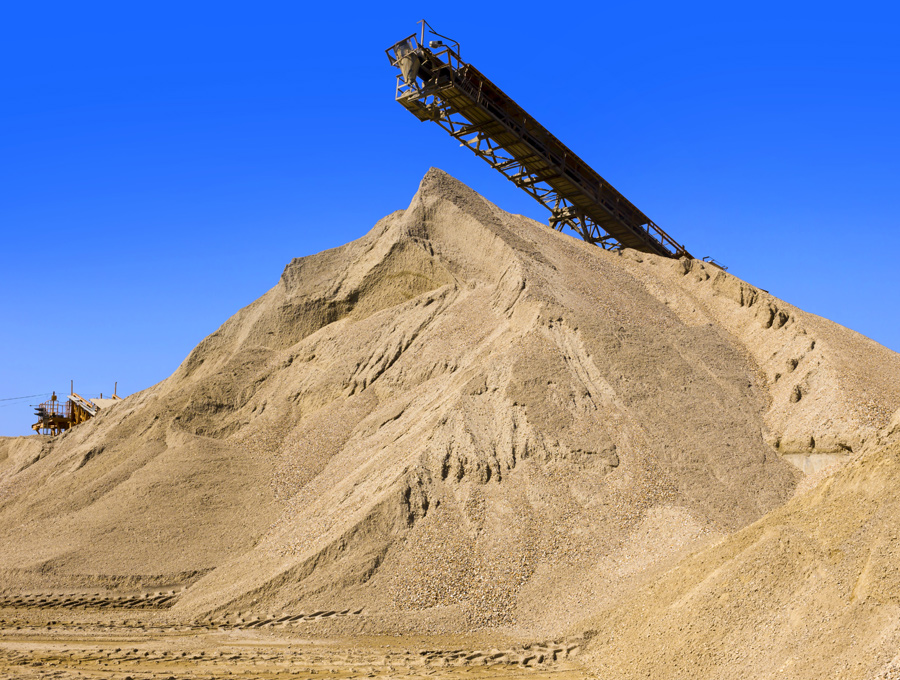Debunking Myths About Aggregate Sites

Aggregates like gravel, sand and limestone are the building blocks for every home, building and road construction project in our communities. They’re extracted from pits and quarries, which are safe and reliable sources of these invaluable materials. But outdated perceptions of quarries have persisted over the years, leading to many myths about this important community resource.
Myth #1: Quarries are bad for the environment.
Truth: They have minimal impact on local ecologies.
Aggregate sites like quarries are highly regulated by the U.S. Environmental Protection Agency (EPA) to ensure they don’t have negative effects on our environment. Newer, environmentally conscious management practices have changed how we access, use and restore aggregate sites, limiting environmental impacts.
One such aggregate site is the proposed Hughes property, located north of Highway 36 and east of McHenry Street in Burlington. The Reesman Company is planning to develop and expand this 75-acre site to improve conditions for schools, residents and businesses in and around Burlington – while delivering $40 million in incremental value to the city and county. The development will simultaneously restore the environment around the area, expanding public access to green space and providing a net positive environmental impact for the region. The plan calls for an 12-acre gravel and sand quarry to extract mineral resources from the site.
Air quality. The primary air quality concern at quarries is dust, which is monitored by the EPA. Quarry operations are required to prevent and minimize dust emissions, perform daily assessments to identify and mitigate sources of dust emissions, and prepare a written fugitive dust control plan.
Quarry operations often need to obtain a comprehensive air permit that addresses emission sources through testing, monitoring, recordkeeping and reporting. In addition, state regulations require all quarries to perform dust-suppression activities, such as operating when the material is wet or moist. Due to these constraints, dust production during quarry operation is controlled to be lower than occupational exposure limits.
At the proposed Hughes site, plans include a 200-foot buffer of trees and vegetation along the west and south boundaries of the new parking lot. These trees will prevent any dust from traveling beyond the site or industrial park. What’s more, the exposed sand and gravel pit will be located approximately 50 feet below this tree buffer zone. Because of this, the natural sand within the pit will be moist from underground water and it will be protected from any wind that could carry dust beyond the site.
Per state law, the aggregate operation must comply with a fugitive dust emission control plan. The site will also regularly and consistently follow DNR recommendations for dust control, such as maintaining stockpiles below grade, watering sand and gravel stockpiles , sweeping paved roads, cleaning truck tires, and enforcing a slow speed limit to reduce dust on the unpaved roads.
Water quality. Many aggregate sites recycle up to 90% of the water used in the operations, which reduces the water needed to keep the quarry running. In this process, operators often use the same safe, water-soluble compounds used by most municipal drinking water and wastewater treatment facilities to ensure water is safe for human consumption. Plus, groundwater experts from multiple regulatory agencies study the groundwater in and around quarries, ensuring the water remains clean for future use.
Myth #2: Quarries produce dangerous silica dust.
Truth: Silica dust is not released at local quarries.
Respirable crystalline silica are very small particles at least 100 times smaller than ordinary sand grains found in a quarry or on a beach. Breathing in this respirable silica dust can cause lung damage.
In Wisconsin, silica is found in sand grains. These grains must be ground into a fine powder to release the silica and allow it to be inhaled. At the Hughes sites, aggregate operations can’t and won’t grind sand particles. Here, silica will remain trapped in the sand grains, where it can’t be released into the air or inhaled by people working or living in the area. This has been studied for years. There are not occupational exposures to silica and therefore no community exposures.
Myth #3: Quarries are noisy and the vibrations can damage nearby structures.
Truth: Modern practices have reduced noise levels.
Although noise is inevitable on some quarry sites, the U.S. Mine Safety and Health Administration (MSHA) imposes noise limits to ensure worker safety and health. Most aggregate sites take this another step further by reducing noise to comply with local ordinances as well. Operators control noise by choosing equipment with lower noise ratings and installing barriers to shield, reflect, or absorb noise.
Blasting agents are used in many sites to break bedrock so it can be extracted and processed. However, this activity is regulated by the Bureau of Alcohol, Tobacco, Firearms and Explosives (ATF), and most states have companion legislation regulating the use of explosives to ensure safety. Over the past 100 years, blasting has been studied and perfected to direct the energy only where it’s needed.
These modern blasting technologies reduce the vibrations and air overpressure that might impact infrastructure, people, and livestock. In most case, vibrations from blasting are much lower than the limits considered strong enough to cause damage to structures.
NOTE: On some sites, like the proposed Hughes site is made up of loose sand and gravel extraction and blasting will not occur on this site.
Myth #4: The truck traffic damages roadways.
Truth: Most roads and bridges can handle the traffic without damage.
The most common truck types for transporting quarry materials are five-axle semi-trailers that weigh
80,000 lbs. and quad-axle dump trucks that weigh 73,000 lbs. Increasing the number of axles displaces weight reducing the impact of heavy vehicles on roads. On the state and county highway systems, the bridges and roads are structurally designed and capable of handling traffic at the expected volumes and weight without damage or unusual wear.
Myth #5: Property values drop around aggregate sites.
Truth: Property values around aggregate sites often rise.
Although every quarry and community is unique, there’s no evidence of widespread and predictable property value declines associated with aggregate operations. Between 1981 and 2011, several credible studies examined the relationship between nonmetallic quarry operations and property values. All concluded there was no consistent relationship between quarries and property values. In fact, some homeowners have reported an increase in property value because of the setbacks, open space and wooded areas used to buffer mining operations. And some studies show that property values near quarries were higher than similar properties farther from the quarry.
The Hughes site is located in an industrial area and is equidistant to residential areas as other similar sites. There’s no indication this new site would have any detrimental impacts on property values in the area.
Myth #6: Aggregate sites can’t be restored.
Truth: Sites are restored to beautiful natural spaces that enhance the community.
After a quarry or aggregate site is no longer in use, it can be reclaimed for enjoyment by wildlife and people in the community. In fact, state law NR 135 requires quarry owners and operators to restore the land after it’s closed as a quarry. This land can be used for agriculture crops and livestock pasture, forests and wildlife habitats, wetlands, recreation, stormwater control, or parks and public green space.
The rehabilitation practices for stone quarries and other aggregate sites have come a long way in recent years, as standards for rehabilitation have continuously increased. What’s more, this process is highly regulated by local, state and federal ordinances to ensure the site is properly rehabilitated. Reclamation plans include activities that protect surface waters and prevent negative effects on neighboring properties. Plus, they often reconnect the reclaimed quarry to existing trails, recreational areas, wildlife management areas, or wildlife migration corridors, greatly expanding the useful green space in a community.
Aggregate is essential to our infrastructure and our economy. At The Reesman Company, we offer responsible and sustainable aggregate production practices and reclamation processes. Call 262-539-2124 or contact us to learn more.



